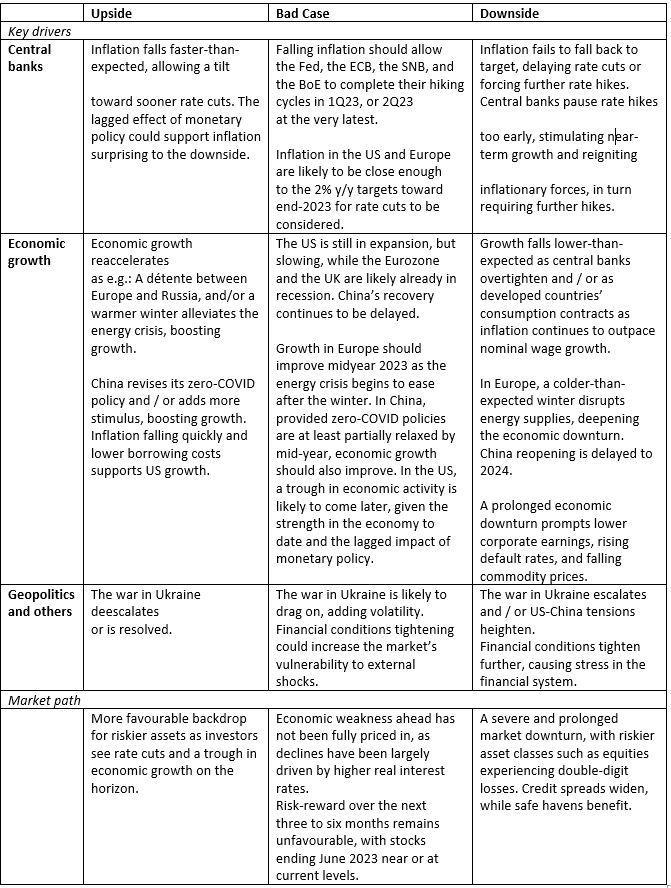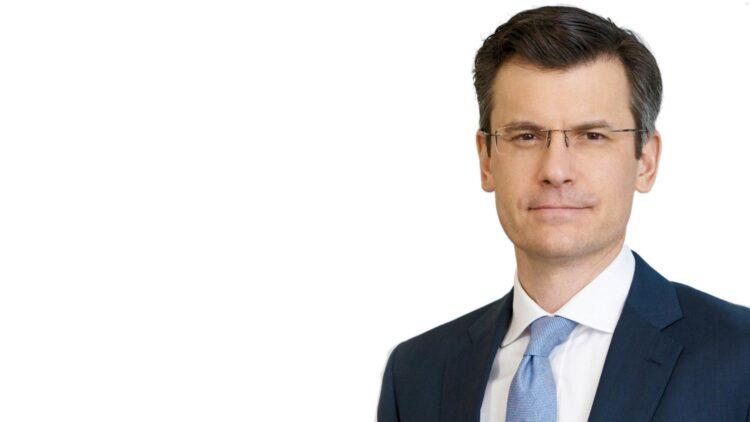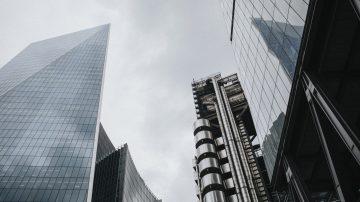As investors try to identify the turning points for inflation, rates, and growth against a complex geopolitical backdrop, UBS’s Chief Investment Office looks ahead to a year of inflections, which will shape the investment landscape in the year to come.
The investment backdrop should become more constructive as 2023 evolves, as inflation falls and as investors start to anticipate rate cuts and higher growth. But as we enter 2023, high inflation, rising rates, and slowing growth expectations favour a relatively defensive stance on risky assets.
With that in mind, the report’s core recommendations for the year ahead include:
- Add defensives and value. Defensive sectors should prove relatively insulated from a weakening economy, while value stocks tend to perform well when inflation is high. More attractive opportunities to buy cyclical and growth stocks may emerge later in the year, as inflation slows and global growth picks up.
- Seek income opportunities. Earning more predictable returns from income strategies is appealing against an uncertain backdrop, while high market volatility itself can also offer a means of generating income. Once rates and growth stabilize elevated yields among lower-rated issuers could present an attractive opportunity.
- Shelter in safe havens. Relatively high US rates and slowing global growth should help keep the US dollar strong in the coming months, and the Swiss franc’s safe-haven appeal is likely to attract inflows. But investors will need to prepare for greenback weakness as Fed policy is expected to turn more dovish.
- Seek uncorrelated hedge fund strategies. Macro, low net equity-long short, and multi-strategy funds can help diversify portfolios in the context of periodically elevated equity-bond correlations, which are likely to persist as swings in monetary policy are expected to continue driving markets.
Mark Haefele (pictured), Chief Investment Officer at UBS GWM, said: “We see a year of inflections ahead and investors currently sheltering from volatility need to plan when, and how, to rotate back into recovery themes in 2023. Over the longer-term we see private markets as a way to grow exposure to secular trends of the decade ahead, notably in the areas of digitalization and energy security.”
The decade of transformation continues
The decade of transformation has already brought significant changes to the global economic, political, societal, and environmental picture. But with central banks determined to bring inflation under control, a transition to green energy spurring investment, the era of security driving public spending on infrastructure and R&D, and the digitalization of business models gaining momentum – all amid lower asset class valuations – a more positive secular backdrop remains possible.
According to the report investment opportunities to capture value and growth in the decade ahead include:
- Position for the “era of security”. Prioritization of energy security, food security, and technological security by governments and businesses will be a key driver of major sectors in the years ahead. Efforts to improve efficiency across the broader food supply chain, for example, are expected to drive opportunities in several areas. Smart agriculture is expected to cumulatively see its market size expand by 11% a year until 2030 from an estimated USD 13 billion today.
- Invest sustainably. Despite underperformance in the past year, long-term performance of sustainable investments remains strong on an absolute and relative basis and sustainability can be a key driver of corporate performance. However, investors need to pay particular attention to diversification by sector, style, and asset class.
- Find value in private markets. Private market investments not only help with portfolio diversification, but putting fresh capital to work in private markets in the years following declines in public markets has historically proven a rewarding strategy over the long term. Strategies that can take advantage of price dislocations are a compelling option for investors looking to build up their exposure to the asset class.
Scenario Analysis















